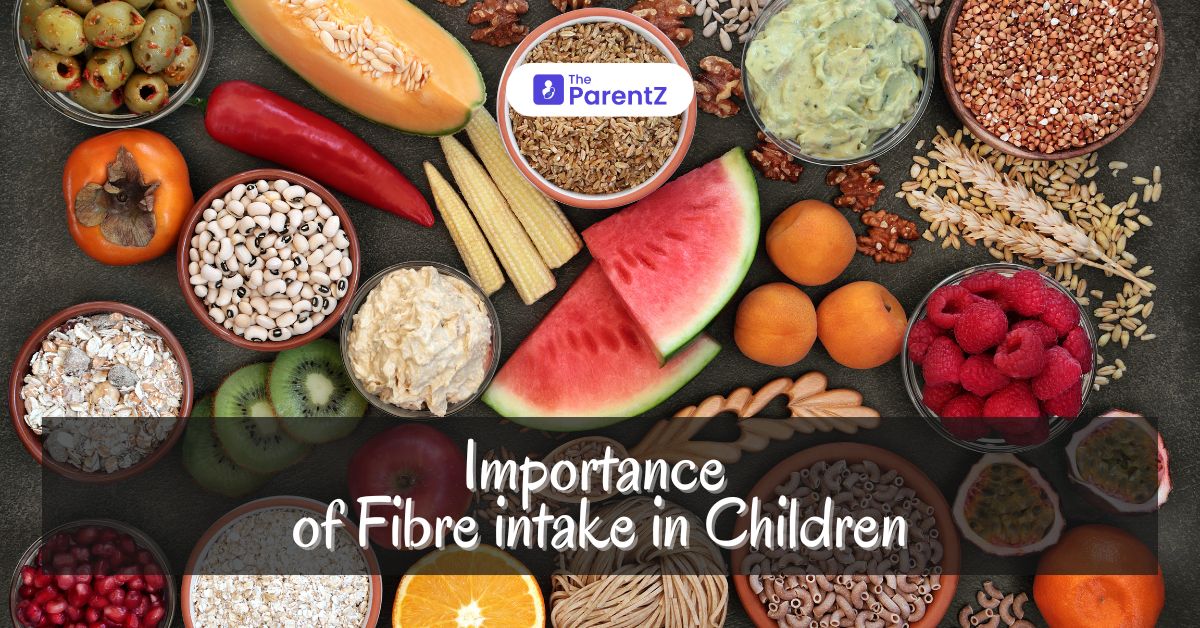Imagine building a house without a solid foundation; no matter how beautiful or sturdy the structure above, it cannot stand the test of time.
Similarly, the early years of a child’s life lay the groundwork for their lifelong health and development. Among the many nutrients essential during this formative period, dietary fibre often takes a backseat in the public consciousness. Yet, fibre is an unsung hero in the nutritional landscape, especially for children aged 0 to 5. This unsung nutrient aids digestion and plays a multifaceted role in supporting metabolic health, immune function, and long-term wellness.
In an age of rising childhood obesity and digestive issues, understanding and leveraging the power of dietary fibre could be a game-changer for parents looking to foster a healthy future for their children.
This article delves into the science-backed benefits of dietary fibre for young children and offers practical insights into integrating this vital nutrient into their daily diet.
Understanding Dietary Fiber
Dietary fibre is a type of carbohydrate that the body cannot digest. Unlike other carbs broken down into sugars, fibre passes through the digestive system relatively intact. There are two main types of dietary fibre:
1. Soluble Fiber: Dissolves in water to form a gel-like material. It can help lower blood cholesterol and glucose levels. Sources include oats, peas, beans, apples, citrus fruits, carrots, barley, and psyllium.
2. Insoluble Fiber: Promotes the movement of material through the digestive system and increases stool bulk, which is beneficial for those who struggle with constipation. Sources include whole-wheat flour, wheat bran, nuts, beans, and vegetables such as cauliflower, green beans, and potatoes.
Physiological Benefits of Dietary Fiber
1. Digestive Health
Dietary fibre is crucial for maintaining a healthy digestive system. This can help children establish regular bowel movements and prevent constipation, a common issue in early childhood.
A fibre-rich diet ensures a healthy gut microbiota composition, which plays a significant role in digestion and immune function. Research indicates that children consuming adequate amounts of dietary fibre have a lower risk of developing gastrointestinal issues such as constipation and irritable bowel syndrome.
2. Metabolic Health
Fibre intake helps regulate blood sugar levels by slowing the absorption of sugar, which can prevent spikes in blood glucose. This is particularly important in preventing childhood obesity and the development of type 2 diabetes.
Studies have shown that children who consume higher amounts of dietary fibre have lower risks of metabolic syndrome, a cluster of conditions that increase the risk of heart disease, stroke, and diabetes.
3. Nutrient Absorption
Although fibre itself is not digested, it aids in the efficient absorption of other nutrients. Soluble fibre, for example, slows digestion, allowing more time to absorb vitamins and minerals from food. This is critical during the early years when children need optimal nutrient intake for growth and development.
4. Immune Function
The gut microbiota, influenced by dietary fibre, plays a vital role in immune function. A healthy gut can enhance the body’s immune response, reducing the incidence of infections and inflammatory diseases. Dietary fibres, particularly prebiotics, stimulate the growth of beneficial bacteria in the gut, which in turn supports the immune system.
5. Weight Management
Fibre-rich foods are generally more filling than low-fibre foods, helping children feel satiated for extended periods. This can prevent overeating and contribute to healthy weight management. Childhood obesity is a growing concern, and fibre’s role in promoting a feeling of fullness can be valuable in combating this issue.
6. Long-term Health Benefits
Establishing healthy eating patterns early in life sets the foundation for long-term health. Children who consume adequate fibre are more likely to continue this habit into adulthood, reducing their risk of chronic diseases such as cardiovascular disease, diabetes, and certain types of cancer.
Sources of Dietary Fiber for Young Children
1. Fruits and Vegetables are excellent soluble and insoluble fibre sources. Apples, pears, bananas, carrots, peas, and broccoli are exceptionally high in fibre.
2. Whole Grains: Whole grain cereals, oatmeal, brown rice, and whole-wheat bread provide significant dietary fibre.
3. Legumes: Beans, lentils, and chickpeas are fibre-rich and can be incorporated into various child-friendly dishes.
4. Nuts and Seeds: While whole nuts may pose a choking hazard for young children, ground or butter forms like almond butter can be safe and nutritious.
Recommended Fiber Intake for Children
The American Academy of Paediatrics suggests a simple guideline for determining fibre needs in children: the “age plus five” rule. For instance, a 4-year-old should consume about 9 grams of fibre daily (4 years + 5 grams). However, some experts recommend higher amounts, advocating for about 14 grams of fibre for every 1,000 calories consumed.
Strategies to Increase Fiber Intake in Young Children
1. Incorporate Fiber Gradually: Introduce high-fiber foods slowly to avoid gastrointestinal discomfort. Start with small portions and gradually increase the amount.
2. Variety is Key: Offer a variety of fibre-rich foods to keep meals exciting and ensure a broad spectrum of nutrients.
3. Be Creative: Integrate fiber-rich foods into familiar dishes. For example, add pureed vegetables to sauces or soups, use whole grain flour in baking, and include fruit in desserts.
4. Educate and Involve: Teach children about the importance of fibre and involve them in meal planning and preparation. This can encourage them to try and enjoy new foods.
Potential Challenges and Solutions
1. Picky Eating: Some children may resist high-fiber foods. Address this by making these foods more appealing through creative presentation and involvement in food preparation.
2. Digestive Discomfort: Rapid increases in fibre can cause bloating or gas. To prevent this, gradually increase fibre intake and ensure adequate fluid consumption to help fibre move through the digestive system smoothly.
3. Availability and Access: Ensure fibre-rich foods are available at home. Opt for fresh, whole foods over processed options, which are typically lower in fibre.
Conclusion
Dietary fibre is essential for the healthy growth and development of children aged 0 to 5. It promotes digestive health, supports metabolic functions, aids in nutrient absorption, boosts immune function, and helps manage weight.
By understanding the benefits and incorporating fibre-rich foods into children’s diets, parents and caregivers can lay a strong foundation for long-term health. Encouraging a variety of high-fibre foods and making dietary fibre an integral part of daily nutrition can significantly impact the overall well-being of young children.









Be the first one to comment on this story.